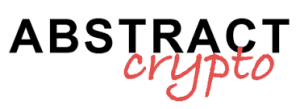A wave of innovation is impacting the digital payments sector in Italy: according to a recent report by Chainalysis, the volume of transactions in stablecoin globally has surpassed 6.5 trillion dollars in the last twelve months, with significant growth also in the Italian and European market.
In this context, Visa is leading the modernization, accelerating the integration of stablecoin into its network and consolidating strategic collaborations with Italian banks and fintech.
Industry analysts observe that the adoption of tokenized digital assets is accelerating in cross-border payments, improving the speed and security of transactions. This anticipates a significant transformation of national payments, where speed, security, and transparency become key elements.
Stablecoin: what it is and why they now attract the big players in payments
The stablecoin, cryptocurrencies pegged to fiat currencies like euro or dollar, are increasing their appeal among banks and operators thanks to their ability to ensure immediate transactions, low costs, and high traceability guaranteed by blockchain technology.
Compared to more volatile cryptocurrencies and traditional banking systems — often characterized by slowness and high costs — stablecoin offer a concrete solution that Visa intends to promote towards mass adoption.
- Real-time transfers between businesses and users
- Lower fees compared to traditional international wire transfers
- Value stability guaranteed by anchoring to recognized assets
The number of Italian companies adopting stablecoin for international transactions and settlement solutions is increasing, as confirmed by ABI Lab, which highlights how these technologies are opening a new phase of competitiveness in the Italian banking sector.
Partnership Visa-banche: the new alliance for the issuance of Italian tokens
Visa has recently strengthened strategic collaborations with major Italian credit institutions, including Intesa Sanpaolo, with the aim of developing solutions related to stablecoin and digital tokens integrated into the Visa circuits (Visa Italia).
Currently, there are no public partnerships with Unicredit for the issuance of tokens, but the sector is evolving rapidly. According to data collected by Visa, interest in digital tokens in Italy is increasing by more than 25% year over year.
The direct involvement of banche italiane promotes the experimentation of innovative fintech solutions, marking the beginning of an increasingly structured collaboration between finanza tradizionale and valute digitali.
The advantages of paying in stablecoin: more security, fewer fees, new opportunities
Opting for payments in stablecoin brings numerous benefits for businesses and individuals:
- Settlements in seconds, surpassing traditional waiting times
- Security and traceability ensured by the blockchain
- Reduction of bank fees and mitigation of exchange rate risk
- Financial inclusion extended also to those who are excluded from traditional banking services
Through these collaborations, Visa aims to offer flexibility and advanced services to a growing number of users, maintaining its leadership and competitiveness within the new digital ecosystem.
Italy and stablecoin: the race for innovation has already begun
Italy does not stand by: according to the Fintech & Insurtech Observatory of the Politecnico di Milano, in 2024 several pilot projects have been launched involving both traditional banks and crypto startups, with particular focus on digital payments and blockchain.
Demand is growing especially in the tourism, export, and large-scale retail sectors, where speed and transparency are increasingly required. Industry operators report a 40% increase in tokenized digital transactions in tourism compared to 2023.
“Stablecoins could represent a central junction in the modernization of collection and payment systems,” stated a representative of the Digital Finance Study Center, emphasizing the importance of this evolution.
Stablecoin and Visa: what challenges and new opportunities for Italy?
The adoption of stablecoin offers greater efficiency in digital payments, eliminating settlement times and facilitating reconciliation between banks and businesses.
It must be said that significant challenges remain, especially related to interoperability between legacy systems and blockchain technologies; meanwhile, Visa positions itself among the main international operators by experimenting https://usa.visa.com/about-visa/newsroom/press-releases.releaseId.19881.html, collaborating with fintech and using blockchains like Solana and Ethereum.
The public debate remains heated: several experts agree that a substantial qualitative leap will only be possible with wider adoption by the public Normative stablecoin: come cambia il quadro administration and SMEs.
regulatory in Italy and Europe
The regulation of stablecoins in Italy is still being defined, in line with the European MiCA (Markets in Crypto-Assets) regulation. The full implementation of MiCA is expected by December 2024, followed by a transitional period of about 18 months to comply with the requirements. Italy will adopt stricter standards to ensure transparency, reserves, and consumer protection (ESMA, Banca d’Italia).
According to the Banca d’Italia, this regulatory tightening will contribute to developing a stable and reliable sector, increasing trust among operators and limiting systemic risks.
Numbers and forecasts: where will the stablecoin market go in the coming months?
The estimates of international analysts (Chainalysis, Bloomberg, Coindesk) indicate that the global volume of transactions in stablecoins fluctuates around 6-7 trillion dollars annually, while the overall market capitalization of stablecoins exceeds 270 billion dollars, with USDC positioned above 58 billion in capitalization.
In Europe, the expected growth is significant, with Germany and Italy recognized as key markets for adoption (Chainalysis 2024, DefiLlama, World Economic Forum).
- Increase in collaboration between traditional banks and big tech
- Introduction of tokenized financial instruments for individuals and businesses
- Implementation of stablecoin-to-euro gateways to facilitate payments
Visa intends to strengthen its position as a global reference for innovative payment solutions based on settlement in stablecoin, secure and subject to real-time monitoring.
New era for digital payments? The insights that few mention
Without a cultural change in the public sector and among SMEs, the mass adoption of stablecoins could encounter slowdowns.
The technology, now established, finds in the mindset of stakeholders a decisive factor for diffusion. Eliminating intermediaries, reducing costs, and speeding up collections are concrete and immediate advantages, as highlighted by experts from Deloitte Digital.
Visa and the main fintech operators continue to invest in blockchain and interoperability, with the aim of making Italy a new “European capital” of digitalization in payments.
Visa and stablecoin settlement: behind the scenes of the technology
Visa employs advanced blockchain systems that allow for real-time settlement of payment flows in stablecoin, eliminating several intermediary steps typical of the traditional banking system. This results in faster operations, less vulnerable to currency fluctuations, and more transparent for all parties involved (Visa Investor Relations).
Conclusion: Italy ready to ride the stablecoin boom
The stablecoin are set to lead the next evolution of digital payments, with Visa and Italian banks at the forefront. The cooperation between the banking world and fintech, combined with a defined regulatory framework, could transform the Italian market into one of the most interesting in Europe. The future of digital transactions is already underway: faster, more secure, and simpler.
(Note: data updated to 2024. Sources: ABI Lab, Chainalysis, Osservatorio Fintech & Insurtech Polimi, Visa, Deloitte Digital, Centro Studi Digital Finance, ESMA, Banca d’Italia.)


